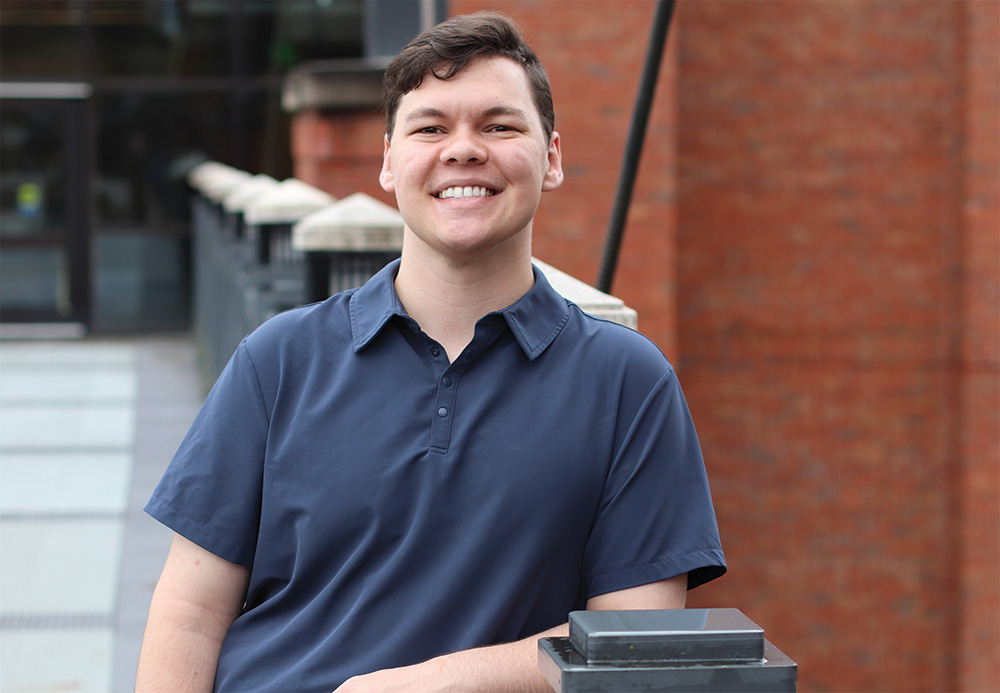Jacob Seals took on industrial engineering studies with a desire to provide uplift for small- and mid-sized businesses using ISE concepts and tools. The junior and first-generation college student from Surgoinsville, Tennessee, didn’t expect this pursuit to lead him to design a robotic device that alleviates physical strain from workers at an East Tennessee DENSO plant.
“Going into my co-op, I was a new ISE student with only a faint familiarity of robotics,” said Seals. “However, for this project, understanding robotics meant I could help operators go home after work with less pain and exhaustion.”
He credits the ISE mindset and lessons from faculty members like Assistant Professor of Practice Laura Knight with helping him pivot into fresh territory.
“Working with new systems is our bread and butter,” he said. “I started by breaking down and understanding the process, then I drew out a process flow diagram to help me comprehend the steps.”
His co-op journey began at the engineering cookout, hosted annually by the college’s Office of Engineering Professional Practice. He connected with DENSO representatives and felt that the company would be a good fit for him.
He followed up with EPP staff and student ambassadors for resume and interview insight before the next Engineering Expo—an event in which employers visit campus to meet prospective co-op and internship students.
“I went straight to DENSO’s table, got an interview from there, and joined DENSO the next semester,” he said.
His initial role was working in the plant’s paint department, helping run the lines and working to meet annual goals set by management.
“I began doing time studies to renew outdated information,” said Seals. “During these observations, I found room for improvement in ergonomics and productivity, especially in an area where operators were stacking boxes.”
He noticed that the physical effort of moving the boxes left workers with a variety of aches, pains, and tiredness—which also slowed down the process.
“With the help of the ergonomics department, I learned the process points that were causing the most issues,” he said. “We found that semiautomation was the best solution.”
Their design combines a lifting device with a stacking feature to help lift boxes from floor to waist height.
“The machine automates the strenuous motions and allows the operators to interact with boxes without heavy lifting, reducing ergonomic risk significantly,” said Seals. “It also reduces the time- consuming process of manually handling the boxes.”
Seals’s follow-through included conveying specifications to vendors and making purchase orders. His concept presentation led to approval to pilot the project.
“I was lucky to have a great team who were kind enough to listen to my questions for hours on end,” said Seals. “They believed in every idea I had when they easily could have dismissed them, and I am grateful for that.”
Confidence born of his DENSO success bolsters Seals in his ongoing endeavors, from his more recent co-op experience at FedEx Supply Chain on into his career plans.
“My experience at DENSO helped me realize that I am capable of handling large projects, even in areas in which I’m unfamiliar,” he said. “My goals are now higher, and I am a more poised communicator to employers, coworkers, and other students.”
Contact
Randall Brown(865-974-0533, rbrown73@utk.edu)
